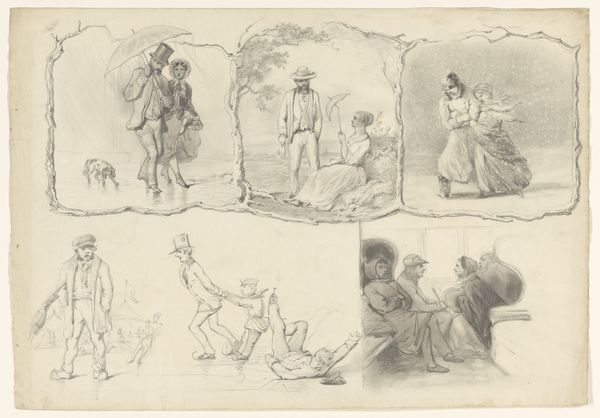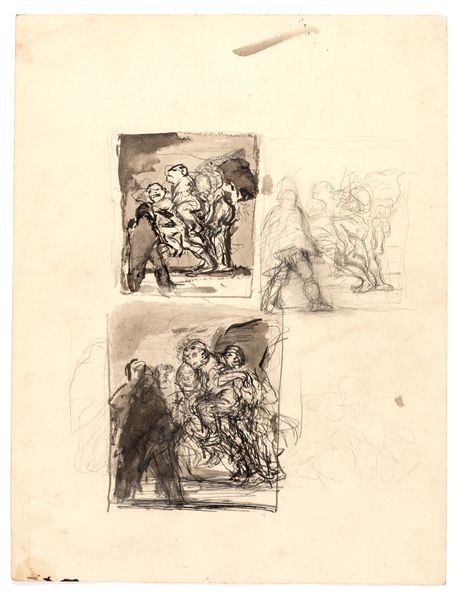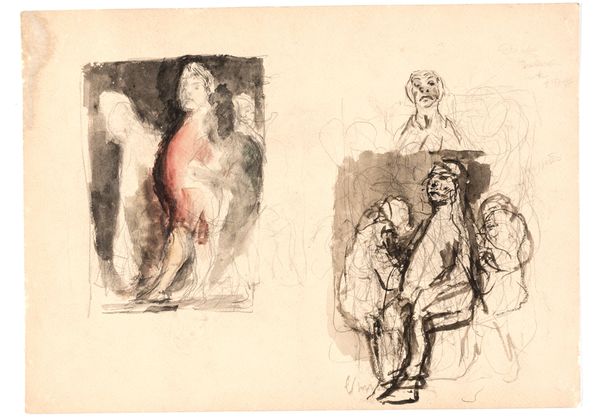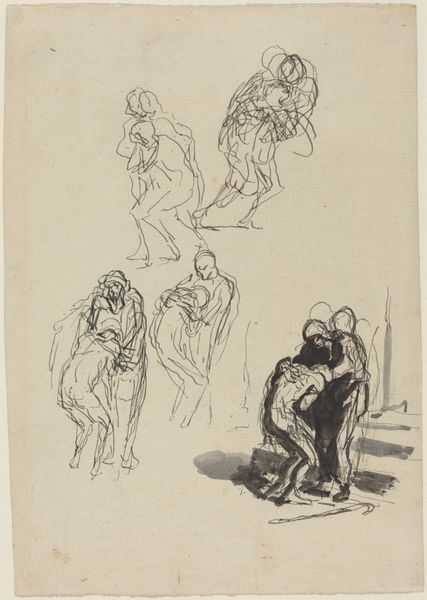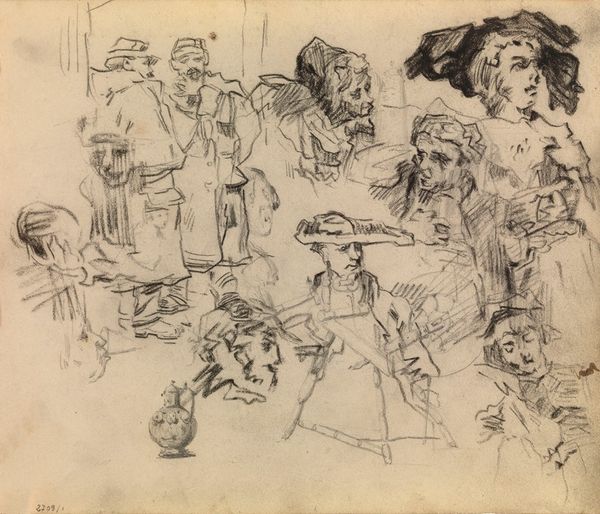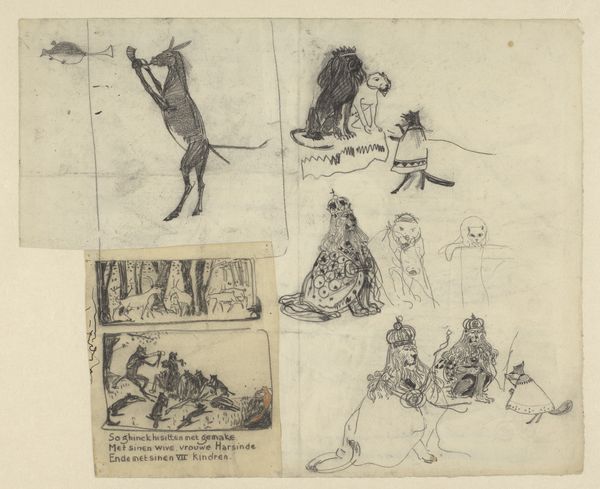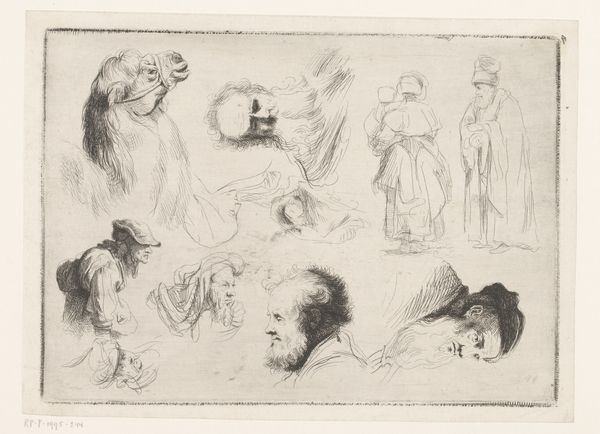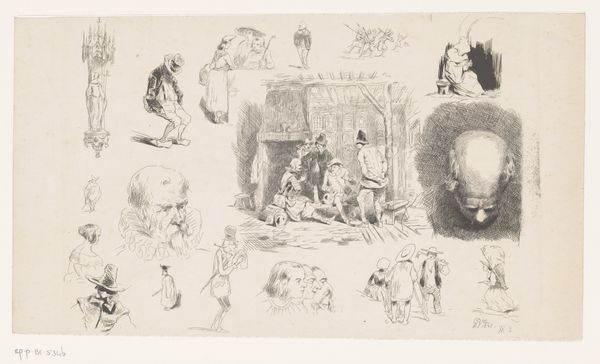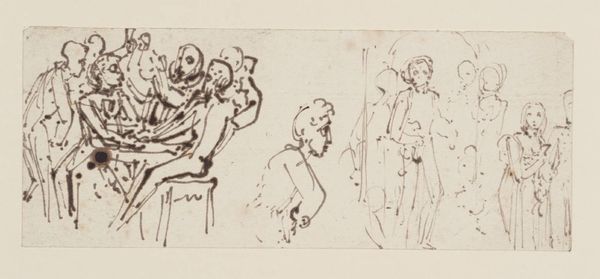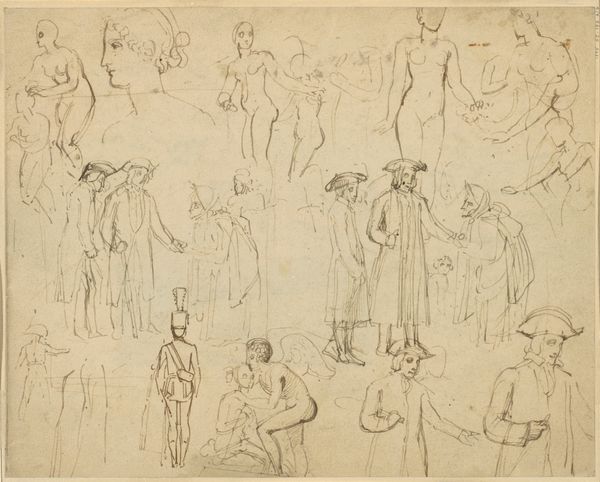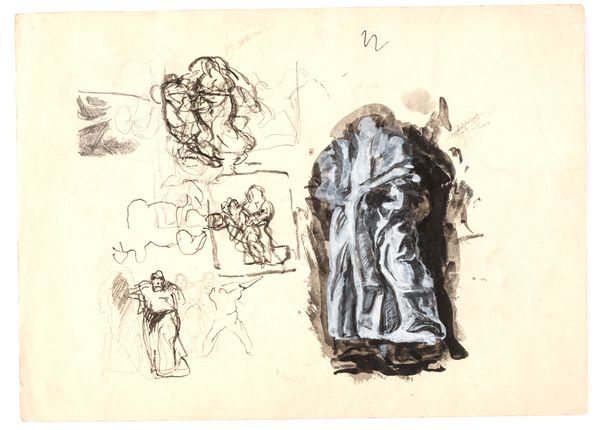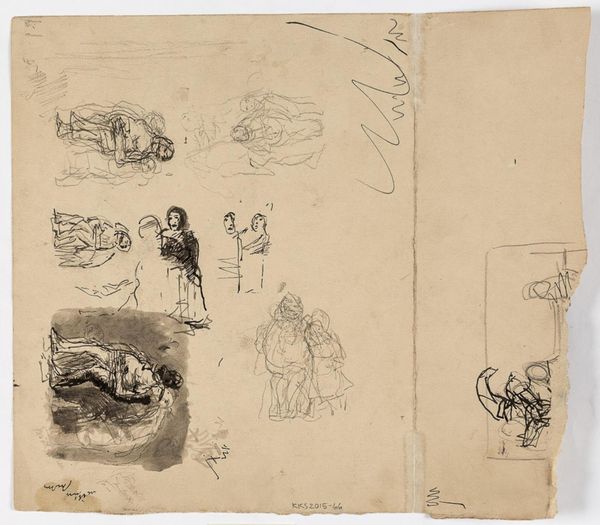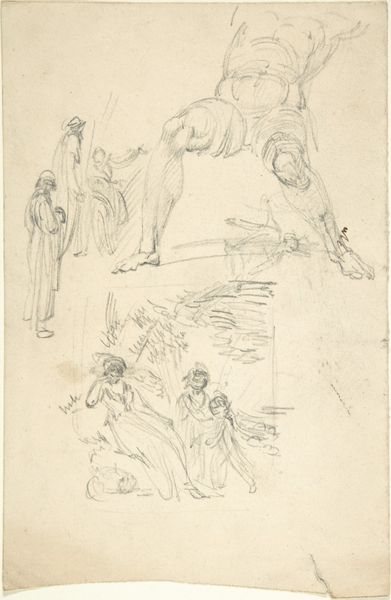
drawing, ink, pen
#
portrait
#
drawing
#
ink drawing
#
pen sketch
#
figuration
#
ink
#
pen
Dimensions: 300 mm (height) x 480 mm (width) (bladmaal)
Editor: We’re looking at "Figure and Composition Studies" by Oluf Hartmann, created between 1879 and 1910. It's an ink and pen drawing. What strikes me most is the collection of faces, figures, and forms, scattered but clearly linked to each other. How do you interpret this work? Curator: I see this page of studies as a reflection of its time, a period of intense social and artistic questioning. The varying figures—some grotesque, others seemingly classical—speak to the clash of traditional ideals with burgeoning modern anxieties. Consider the mask-like face at the top, juxtaposed with the draped figures: does this layering hint at a critique of societal facades? What power structures do these figures and their compositions bring to light? Editor: That’s a great question! I see that now, especially that contrast between the exaggerated mask and the draped figures that you point out, perhaps symbolizing hidden realities. The arrangement of figures together creates this juxtaposition of these power structures. Curator: Exactly. This visual discord can be linked to contemporary discussions around identity and representation, especially the artist's positionality within a rapidly changing world. We might ask: what is Hartmann trying to express about the human condition within these social transformations? How might his artistic choices reflect broader societal struggles and inequalities? Editor: So it’s not just about visual skill, but about grappling with big questions? I mean, did the artist explicitly mention any agenda? Curator: Rarely is such intent spelled out explicitly. Instead, artists embed commentary within the visual language they use. The value of a work like this one stems not only from its aesthetic qualities, but also the debates and introspection it ignites. These studies become a lens through which we examine not only art history but its lasting cultural influence. Editor: That definitely changes how I see it. I thought they were sketches, but they appear as societal statements. Curator: And isn't that the beauty of art? How a simple sketch might unravel larger systems of understanding and resistance? Editor: Absolutely! Now, looking at it again, I appreciate it a lot more. Thanks for sharing all this.
Comments
No comments
Be the first to comment and join the conversation on the ultimate creative platform.

